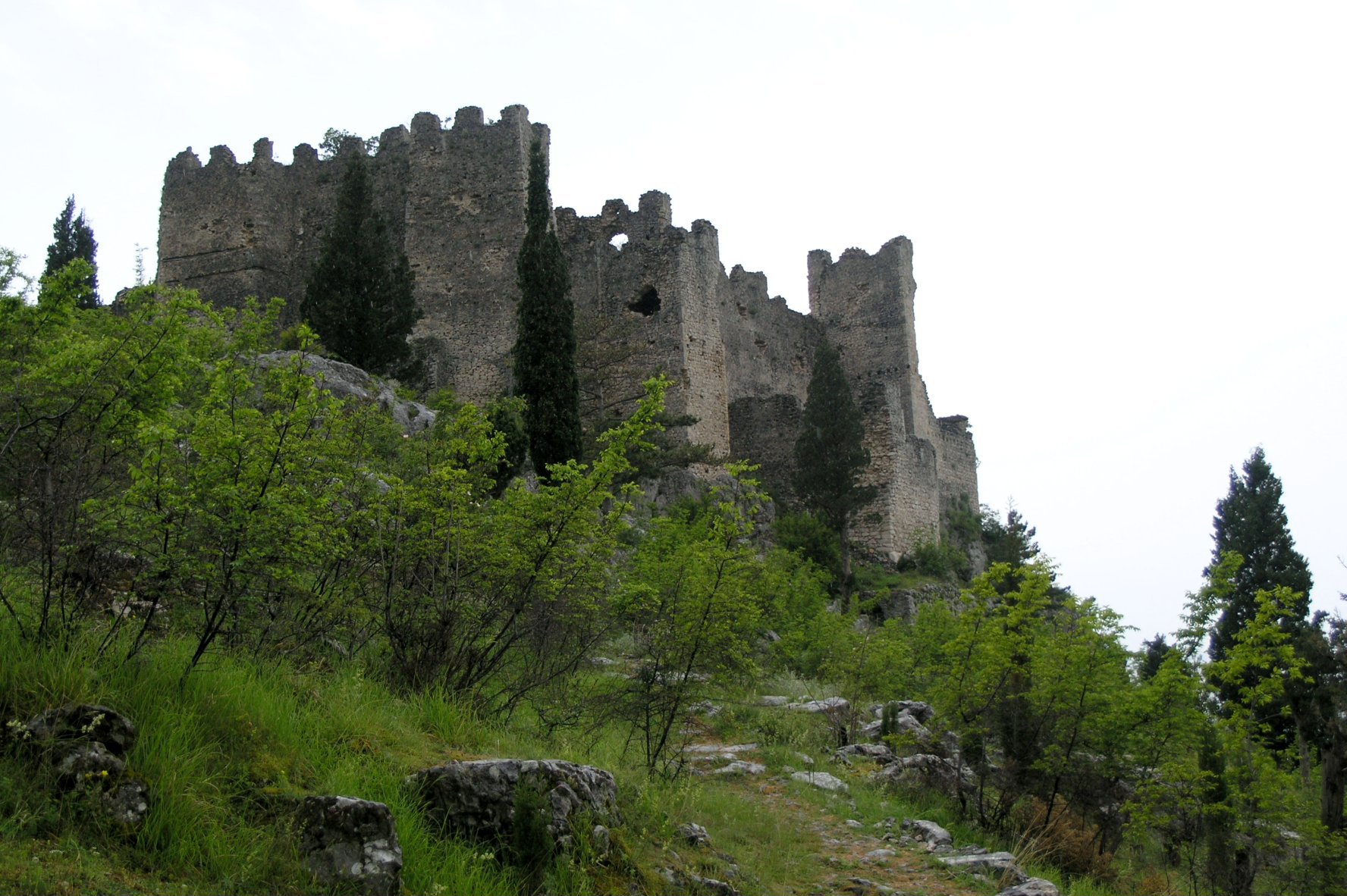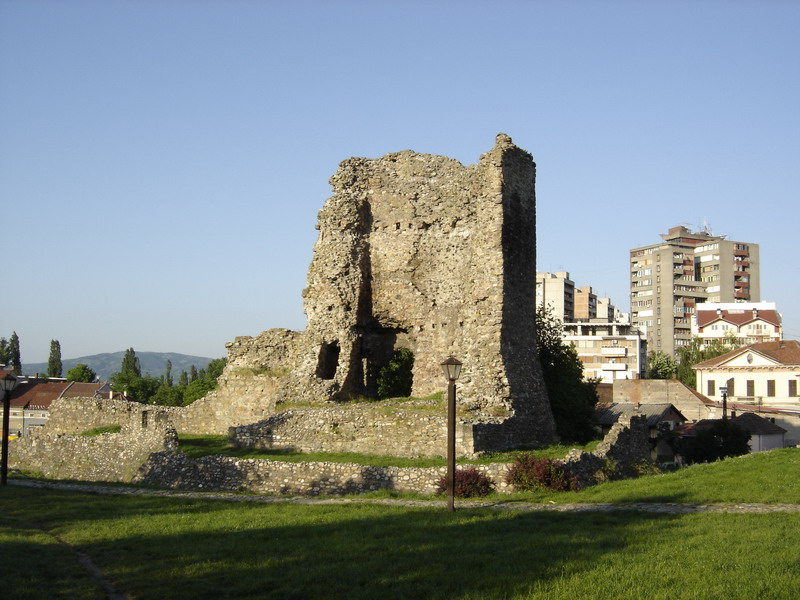|
Vlatko Hercegović
Vlatko Hercegović (Cyrillic: Влатко Херцеговић), (born 1428 – died 1489), was the second and the last ''Herzog of Saint Sava'', succeeding his father Stjepan Vukčić in 1466. Succession After the fall of the kingdom in 1463, '' herceg'' Stjepan Vukčić, lord of its southernmost province, lived for another three years, enough to see kingdom's complete dismantling. For this Stjepan blamed his eldest son Vladislav Hercegović. On 21 May 1466, old and terminally ill duke dictated his last words, recorded in a testament, and bypassing Vladislav he condemned him by saying that it was him who ''"brought the great Turk to Bosnia to the death and destruction of us all"''. The next day, on 22 May 1466, duke died. Stjepan Vukčić was succeeded as ''herceg'' by his second and younger son Vlatko Hercegović, who struggled to retain as much of the territory he could. Continued struggle However, Blagaj, Kosača capital, fell in 1466, while Ključ fort between Nevesinj ... [...More Info...] [...Related Items...] OR: [Wikipedia] [Google] [Baidu] |
Stjepan Vukčić Kosača
Stjepan Vukčić Kosača ( sr-Cyrl, Стјепан Вукчић Косача; 1404–1466) was the most powerful Bosnian nobleman whose active political career spanned the last three decades of medieval Bosnian history, from 1435 to 1465. During this period, three kings succeeded to the Bosnian throne, Tvrtko II, Thomas ''(Tomaš)'', Stephen Tomašević ''(Stjepan Tomašević)'', one anti-king, Radivoj, the older brother of King Thomas, and the county's fate was sealed by the Ottoman conquest. He was probably born in 1404, a son of the Knyaz of Drina, Vukac Hranić, and Katarina, whose ancestry is unknown. Stjepan's father's hereditary lands were in the Upper Drina region. A member of the Kosača noble family, he succeeded his uncle, Duke Sandalj, as duke of Humska zemlja and the Grand Duke of Bosnia, in 1435. None influenced the development of the late Bosnian medieval state as much as Stjepan Vukčić did. Supporting Radivoj in the line of succession for ... [...More Info...] [...Related Items...] OR: [Wikipedia] [Google] [Baidu] |
Foča
Foča ( sr-Cyrl, Фоча, ) is a town and a municipality located in Republika Srpska in south-eastern Bosnia and Herzegovina, on the banks of Drina river. As of 2013, the town has a population of 12,234 inhabitants, while the municipality has 18,288 inhabitants. Foča houses some faculties (including the Medical and Orthodox Theological Faculty of Saint Basil of Ostrog) from the Istočno Sarajevo University. It is also home to the "Seminary of Saint Peter of Sarajevo and Dabar-Bosna", one of seven seminaries in the Serbian Orthodox Church. Foča was also, until 1992, home to one of Bosnia's most important Islamic high schools, the Madrasa of Mehmed Pasha Kukavica. The Sutjeska National Park, which is the oldest National Park in Bosnia and Herzegovina, is located in the municipality. History Early history The town was known as Hotča during medieval times. It was then known as a trading centre on route between Ragusa (now Dubrovnik) and Constantinople (now Istanbul, Turkey) ... [...More Info...] [...Related Items...] OR: [Wikipedia] [Google] [Baidu] |
Koja Zaharia
Koja Zaharia or Koja Zakaria ( it, Coia Zaccaria) (? – before 1442) was an Albanian nobleman and a member of the Zaharia family. Name In Ragusan documents he is referred to as Kojčin or Gojčin. Because of that, many scholars like Nicolae Iorga, Ludwig Thalloczy and Konstantin Jireček have mistakenly believed he was actually Gojčin Crnojević. His name is rendered by Robert Elsie as Koja Zacharia or Koja Zakarija. Family His wife was Bosa (Boxia), daughter of Leka Dukagjin who was a father of Tanush Major Dukagjini. Their children were Lekë Zaharia (son), Bolja (daughter) and a daughter of unknown name who married Đurađ Đurašević Crnojević. Koja died sometime before 1442. According to Ćiro Truhelka Bolja Zaharia was married to Petar Vojsalić, while according to Aleksa Ivić she was married to Petar I Pavlović. Koja's widow Boša died in Scutari on 19 September 1448 when a lot of people died during a fire in the town. Allegiances Lordship of Zeta U ... [...More Info...] [...Related Items...] OR: [Wikipedia] [Google] [Baidu] |
Jelena Lazarević
Jelena Lazarević ( sr-cyr, Јелена Лазаревић; 1365/1366 – 1443), also known, by marriages, as Jelena Balšić Hranić or Jelena Balšić or Jelena Kosača, was a medieval Serbian princess, daughter of Prince Lazar of Serbia and Princess Milica Nemanjic. She had a very strong personality and significantly influenced the way her husbands, first Đurađ II Balšić and second Sandalj Hranić Kosača, and her son Balša III governed their realms. Jelena encouraged them to resist Venetian encroachment on territory belonging to Zeta, the medieval Serbian state ruled by Đurađ II and then by Balša III after Đurađ II's death. She is also known as a writer in epistolary literature, particularly her correspondence with Nikon of Jerusalem, a monk in the Gorica monastery on Lake Skadar (Montenegro). Her three epistles are part of the '' Gorički zbornik'', a medieval manuscript collection. Name Jelena's nickname was "Lady Lena" (Госпођа Лена) or the ... [...More Info...] [...Related Items...] OR: [Wikipedia] [Google] [Baidu] |
Đurađ II
Đurađ ( sr-Cyrl, Ђурађ, ; ) is a Serbian masculine given name, derived from the Greek ''Georgios''. It is also transliterated as Djuradj. It is, along with the variant ''Đorđe'', the equivalent of the English ''George''. It was widespread in medieval Serbia, being the name of many noblemen and magnates. It may refer to: * Đurađ I Balšić ( 1362–78), Lord of Zeta * Đurađ II Balšić (1385–1403), Lord of Zeta * Đurađ Bogutović ( 1370–99), Serbian nobleman * Đurađ Branković (1377–1456), Serbian Despot * Đurađ Đurašević ( 1413–35), Serbian nobleman * Đurađ Crnojević ( 1489–1514), Lord of Zeta * Đurađ Vasić (born 1956), Serbian football coach and former player * Đurađ Jakšić (born 1977), Serbian politician * (born 1992), Canadian journalist * Đurađ Dobrijević (born 1995), Serbian footballer See also * Đura, diminutive * Đuro Đuro ( sr-Cyrl, Ђуро; also transliterated Djuro or Gjuro) is a South Slavic male given name derived f ... [...More Info...] [...Related Items...] OR: [Wikipedia] [Google] [Baidu] |
Balša III
Balša III ( sr-cyr, Балша III) or Balsha III ( sq, Balsha III) (1387 – 28 April 1421, in Belgrade) was the fifth and last ruler of Zeta from the Balšić noble family, from April 1403 to April 1421. He was the son of Đurađ II and Jelena Lazarević. Reign In April 1403, the seventeen-year-old Balša became the ruler of Zeta when his father Đurađ II died as a result of the injuries he had suffered at the Battle of Tripolje. As he was young and inexperienced, his main advisor was his mother, Jelena, a sister of the ruler of Serbia at the time, Stefan Lazarević. Under the influence of his mother, Balša reverted the order of the state religion, passing a law declaring Orthodox Christianity as the official confession of the state, while Catholicism became a tolerant confession. Balša waged a 10-year war against Venice, the First Scutari War. In 1405, Ulcinj, Bar and Budva were seized by the Venetians. Balša then became a vassal to the Ottoman Turks. In 1409, however, V ... [...More Info...] [...Related Items...] OR: [Wikipedia] [Google] [Baidu] |
Bosnia Eyalet
The Eyalet of Bosnia ( ota, ایالت بوسنه ,Eyālet-i Bōsnâ; By Gábor Ágoston, Bruce Alan Masters ; sh, Bosanski pašaluk), was an eyalet (administrative division, also known as a ''beylerbeylik'') of the Ottoman Empire, mostly based on the territory of the present-day state of Bosnia and Herzegovina. Prior to the Great Turkish War, it had also included most of Slavonia, Lika, and Dalmatia in present-day Croatia. Its reported area in 1853 was . Background After the execution of King Stephen Tomašević in 1463, the central part of the Kingdom of Bosnia was transformed into the sanjak of Bosnia. The Duchy of Herzegovina was added in 1483. History Establishment In 1580, Ferhad Pasha Sokolović became the first governor of the Bosnia Eyalet, as beylerbey (also referred to as "pasha"). The Bosnia Eyalet (or Pashaluk) included the Sanjak of Bosnia (central province), Sanjak of Herzegovina, Sanjak of Vučitrn, Sanjak of Prizren, Sanjak of Klis, Sanjak of Krka, and Sanjak of ... [...More Info...] [...Related Items...] OR: [Wikipedia] [Google] [Baidu] |
Ajas Pasha
Ajas Pasha (? - Anatolia, 1486) was a Bosnian sanjak-bey and later pasha in Ottoman service. Career He was sanjak-bey of Bosnia, referred to as ''the Lord of the King's land'', from 1470 to 1475, 1477 to 1478 and in 1483, and ruled sanjak-bey of Herzegovina, also referred to as ''Herzegovina's Krajisnik'' or ''Duke of the Herzeg's land'', from 1478 to 1480 and 1481 to 1483. In 1472 he raided Croatian littoral, Istria and Friuli region. In November 1481 he besieged Herceg Novi, and on 14th December of 1481 he captured the city after Vlatko Hercegović gave up defending it and agreed surrender. For this he was awarded title of ''pasha''. Achievements He played a key role in the development of Visoko from a Bosnian medieval type of town to Ottoman styled urban organization. He legalized his waqf in 1477 hammam, shops, maktab, water supply system, bridge on river Bosna, madrasa Madrasa (, also , ; Arabic: مدرسة , pl. , ) is the Arabic word for any type of educationa ... [...More Info...] [...Related Items...] OR: [Wikipedia] [Google] [Baidu] |
Bayezid II
Bayezid II ( ota, بايزيد ثانى, Bāyezīd-i s̱ānī, 3 December 1447 – 26 May 1512, Turkish: ''II. Bayezid'') was the eldest son and successor of Mehmed II, ruling as Sultan of the Ottoman Empire from 1481 to 1512. During his reign, Bayezid II consolidated the Ottoman Empire and thwarted a Safavid rebellion soon before abdicating his throne to his son, Selim I. He evacuated Sephardi Jews from Spain after the proclamation of the Alhambra Decree, and resettled them throughout Ottoman lands, especially in Salonica. Early life Bayezid II was the son of Mehmed II (1432–1481) and Gülbahar Hatun, she is generally accepted as the real mother of Bayezid II. There are sources that claim that Bayezid was the son of Sittişah Hatun. This would make Ayşe Gülbahar Hatun a first cousin of Bayezid II. However, the marriage of Sittisah Hatun took place two years after Bayezid was born and the whole arrangement was not to Mehmed's liking. Born in Demotika, Bayezid II was e ... [...More Info...] [...Related Items...] OR: [Wikipedia] [Google] [Baidu] |
Sultan Mehmed II
Mehmed II ( ota, محمد ثانى, translit=Meḥmed-i s̱ānī; tr, II. Mehmed, ; 30 March 14323 May 1481), commonly known as Mehmed the Conqueror ( ota, ابو الفتح, Ebū'l-fetḥ, lit=the Father of Conquest, links=no; tr, Fâtih Sultan Mehmed, links=no), was an Ottoman sultan who ruled from August 1444 to September 1446, and then later from February 1451 to May 1481. In Mehmed II's first reign, he defeated the crusade led by John Hunyadi after the Hungarian incursions into his country broke the conditions of the truce Peace of Szeged. When Mehmed II ascended the throne again in 1451, he strengthened the Ottoman navy and made preparations to attack Constantinople. At the age of 21, he Fall of Constantinople, conquered Constantinople (modern-day Istanbul) and brought an end to the Byzantine Empire. After the conquest Mehmed claimed the title Caesar (title), Caesar of the Roman Empire ( ota, قیصر روم, Qayser-i Rûm, links=no), based on the fact that Constanti ... [...More Info...] [...Related Items...] OR: [Wikipedia] [Google] [Baidu] |





.png)

